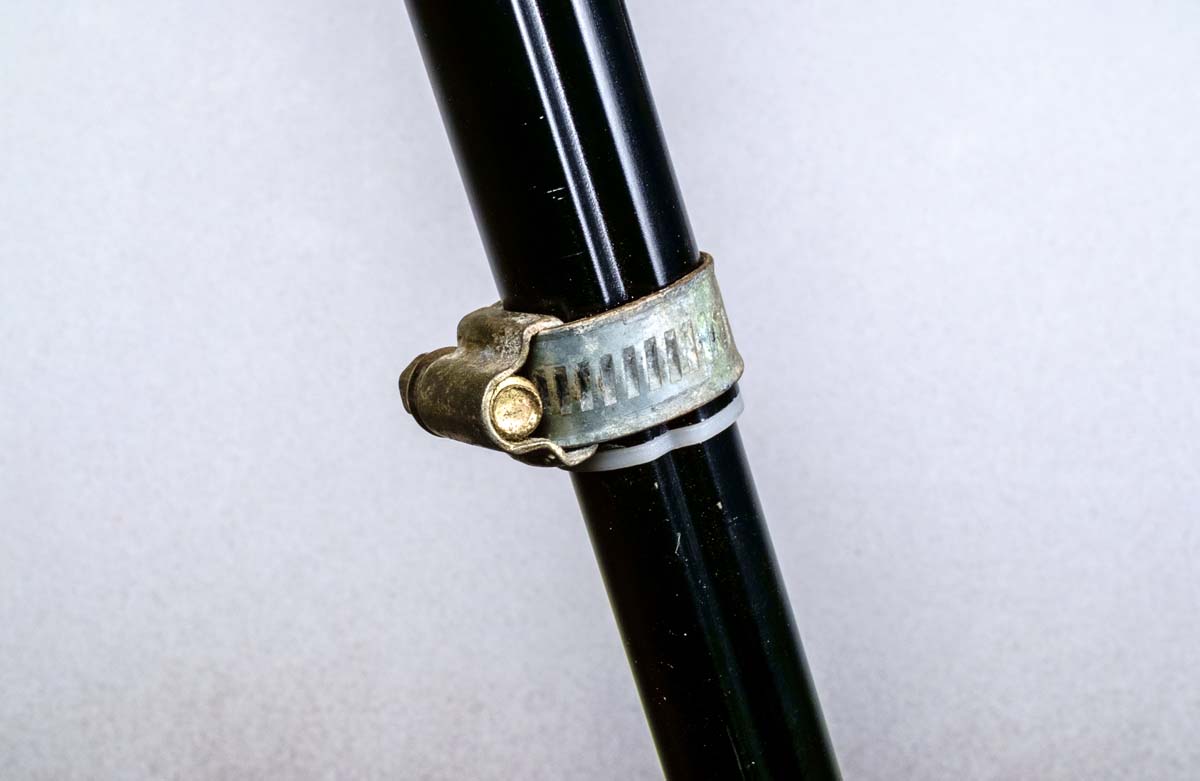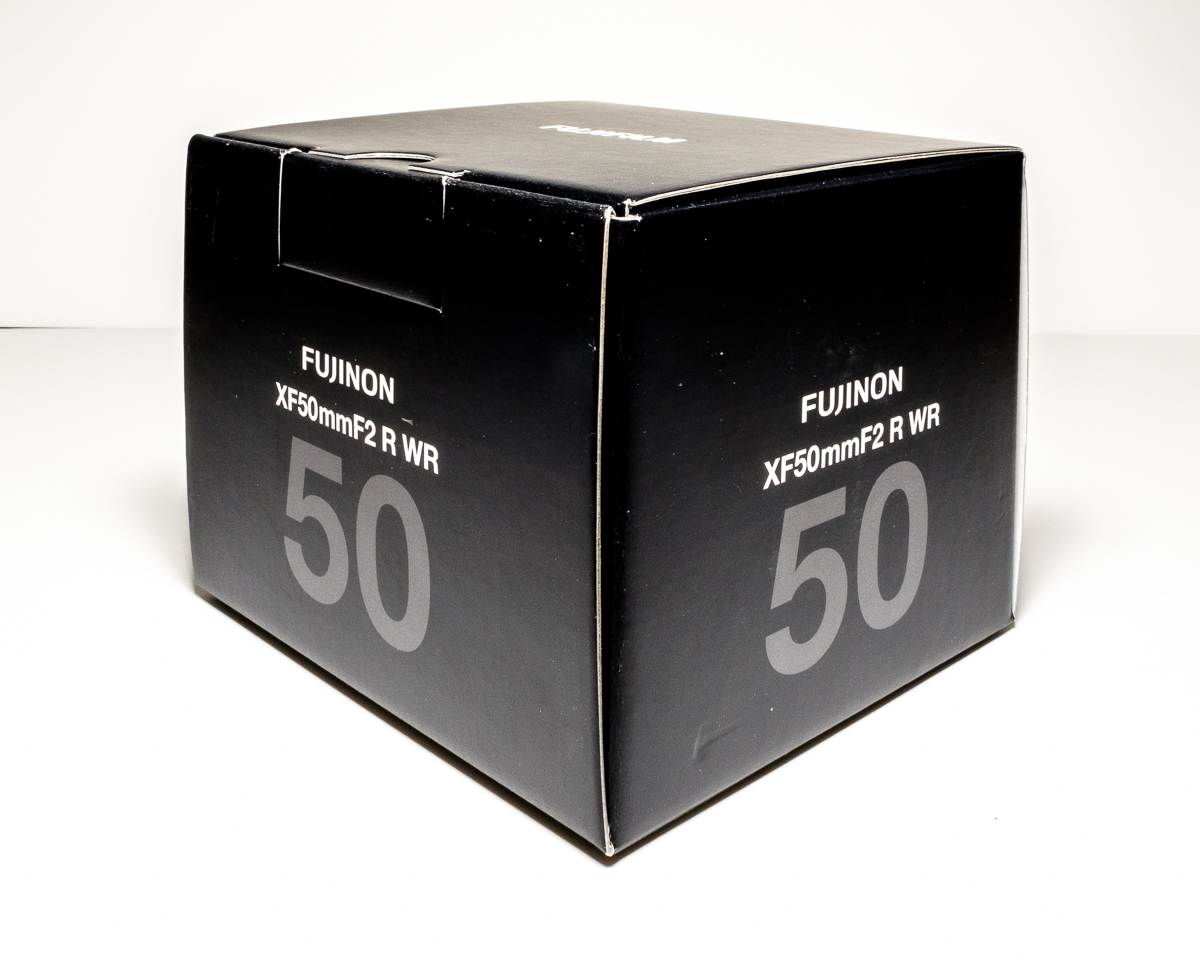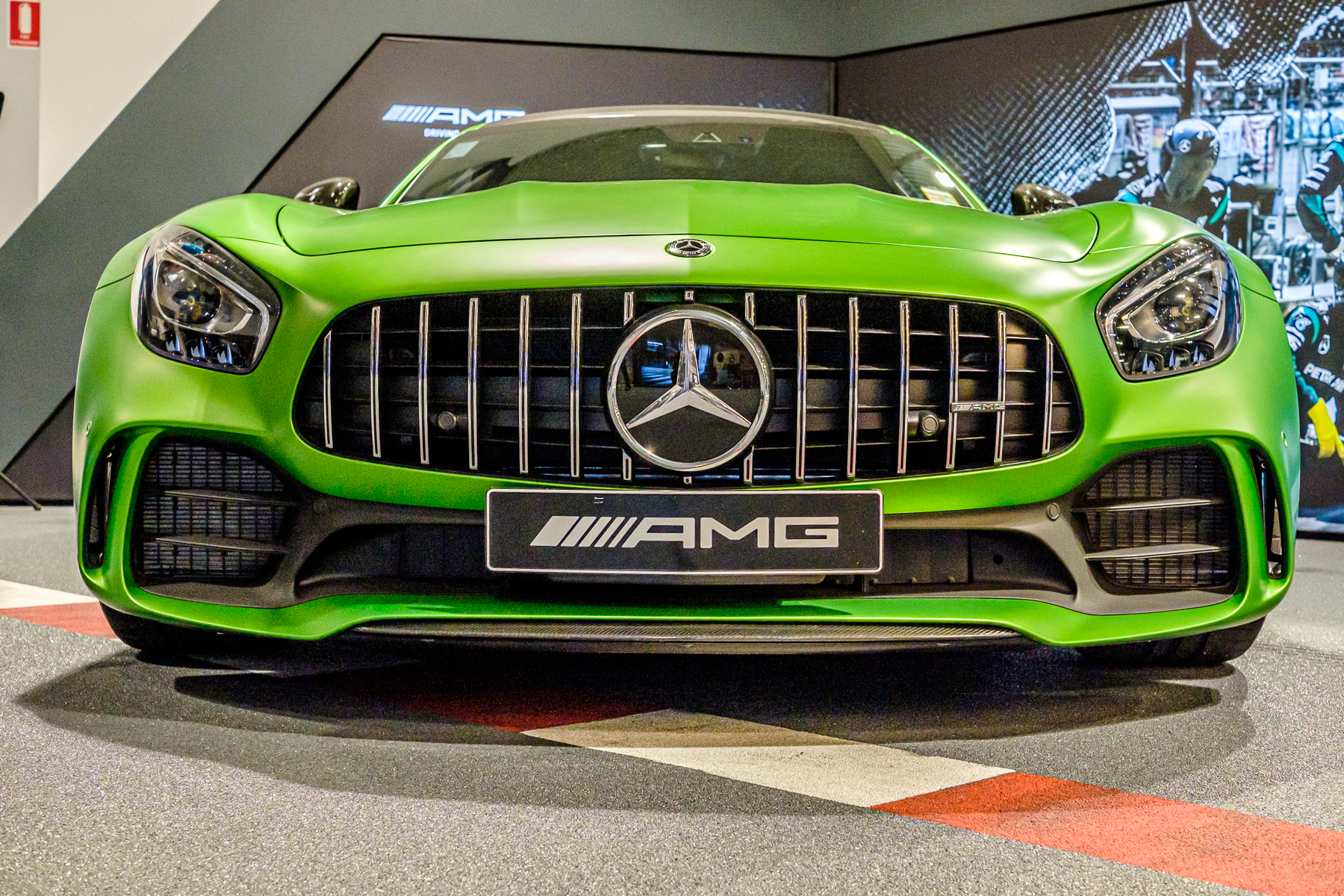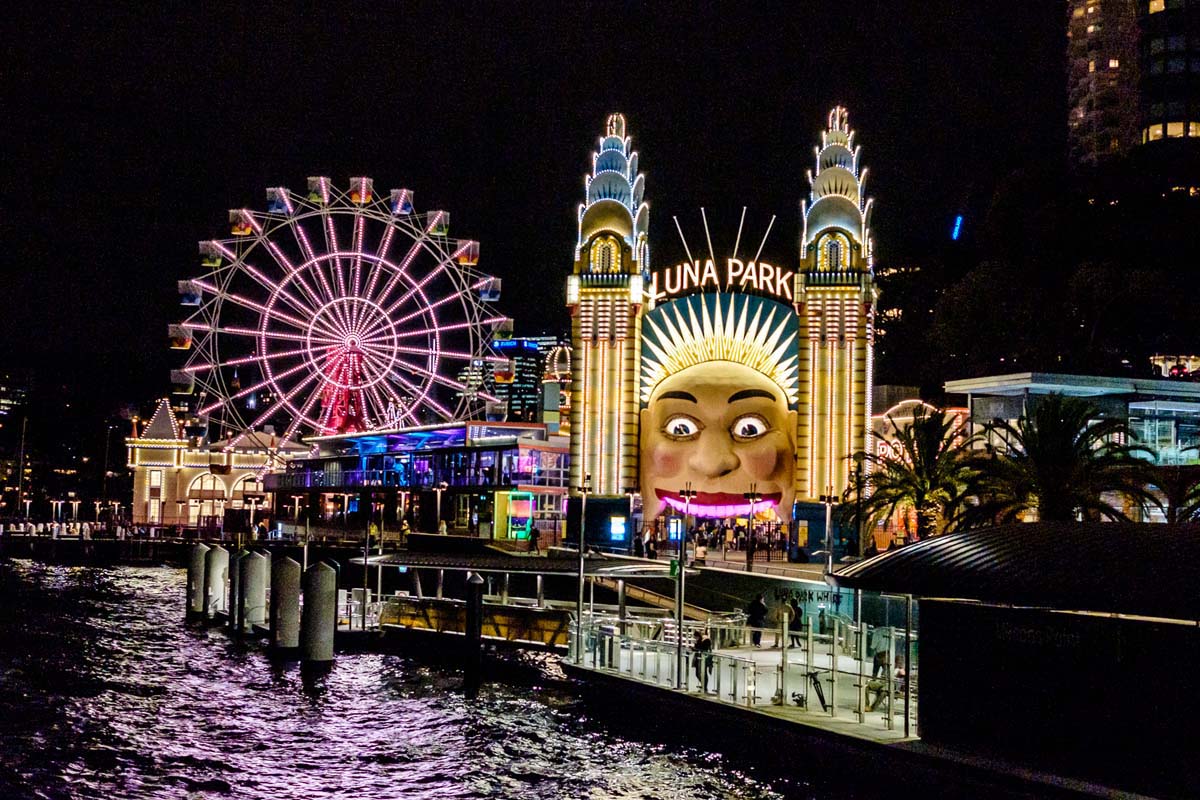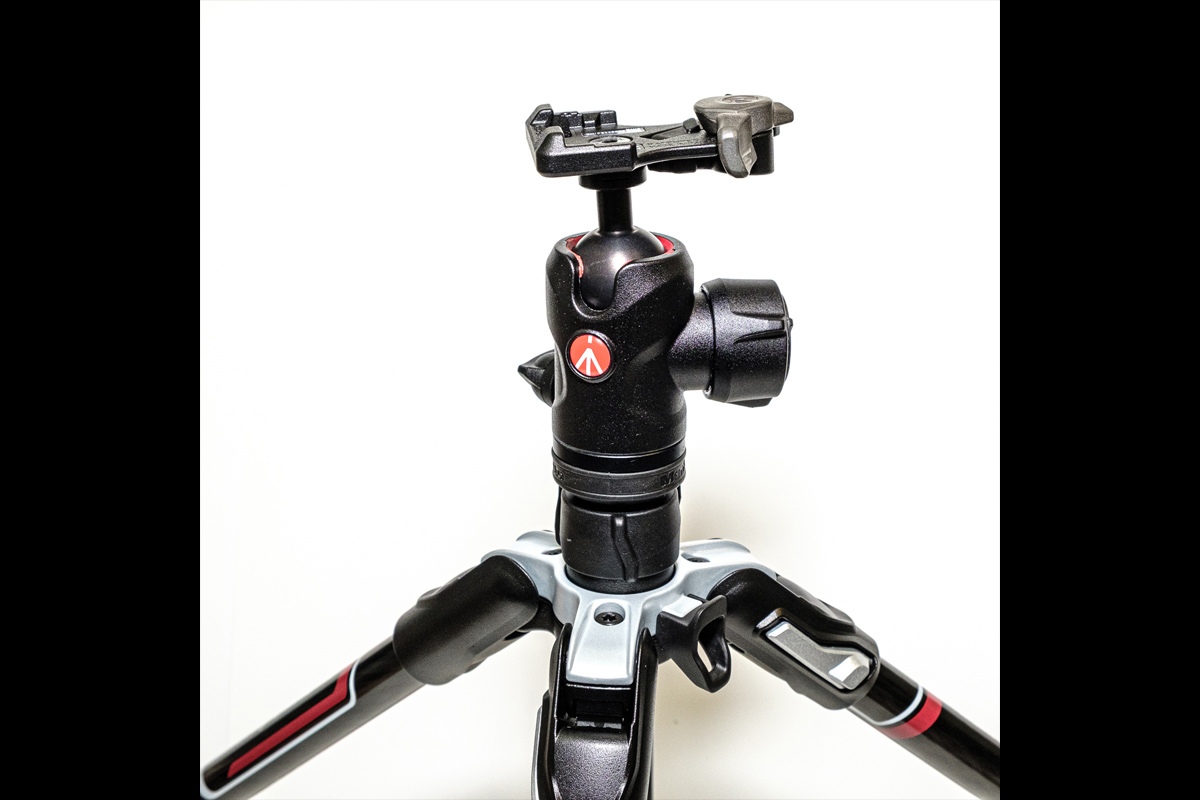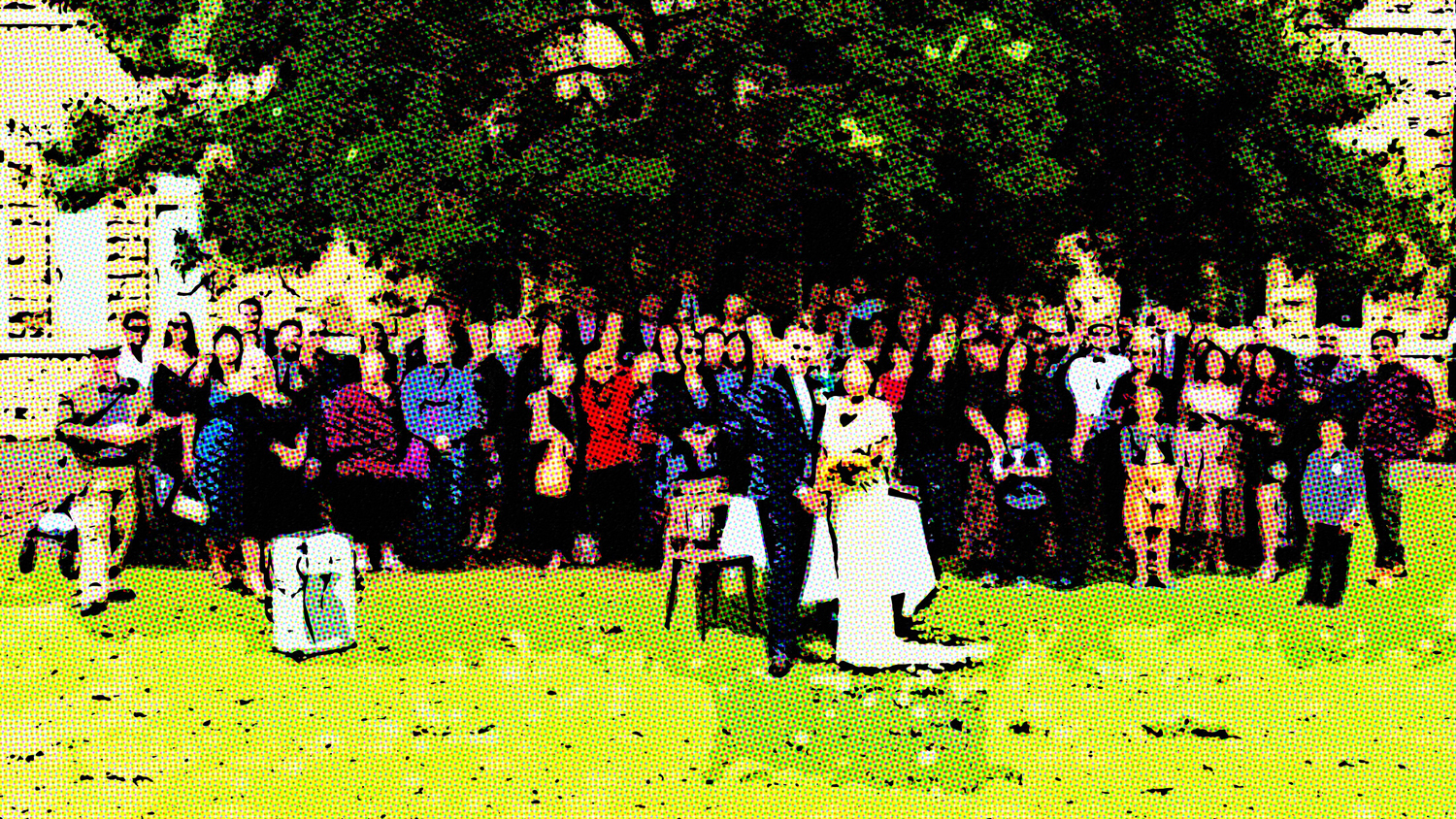26 Jun You Can’t Buy This Tripod From Us
And you're darned lucky at that. It's a piece of junk. The legs are thin-wall aluminium tubing with a profile pressed into them - so far so normal. They ride in white plastic bushes that are held in place by cutouts in the tubes - again pretty much what you might see in better tripods, albeit a bit flimsy here. But the whole edifice falls into a heap with the leg clamps - they are cheap plastic clipovers that compress a rubber block onto the next smaller tube. I do not decry clipovers - Manfrotto have used them on some of their new tripods and they are a model of good design. Their clips are metal and they have adjustment bolts to let you take up slack as they wear in. But these flimsy clips are just disasters waiting to happen. One's broken - and has been replaced by the only sensible alternative - a car hose clamp. The other two at the same level of the tripod are showing the same cracks that broke the first one, so it's off to Supercheap...


